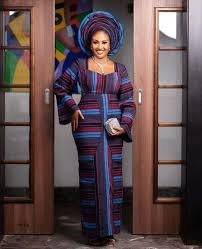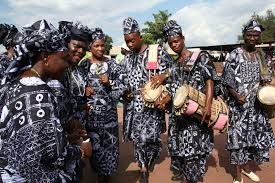Culled from Article by Fatim-Kake Sylla – Sirani’s Fashion
Over the years, African fashion has gained global recognition, and its influence can be seen in the fashion industry worldwide. Many fashion trends that we see today can trace their origins to African culture. Take, for example, the use of bold and bright colors in fashion. This colorful style is a direct reflection of the vibrant and colorful African landscape. Various patterns and prints such as Ankara and Kente have also become popular worldwide. The African influence can also be seen in the use of beads and other adornments which are now widely used in jewelry-making.

African fashion is more than just an aesthetic, it represents a rich culture and heritage that has influenced fashion trends around the world. It is a reminder of the incredible beauty and diversity of African culture. In this article, we will explore some of the fashion trends that originated from African culture and how they have influenced the fashion industry globally.
History Of African Fashion and Culture
African fashion has a rich and diverse history that has been shaped by various cultures and traditions. African culture is known for its vibrant colors, bold prints, and intricate designs. The brief history of African fashion dates back to the early civilization of African people, who used natural materials derived from their environment to create clothing. The western influence can be seen in the introduction of robes and gowns from the Middle East, known as “boubou”. In the Yoruba culture, traditional garments are made with a variety of fabrics, including aso-oke, adire and ankara. African women have always played a crucial role in shaping fashion, as they use clothing to tell stories about their lives and experiences. Today, African fashion is celebrated globally as an expression of culture and artistic creativity.

What is Traditional African Clothing made of?
Traditional African clothing embodies the rich cultural heritage of Africa. The materials used to create traditional African clothing vary from region to region, depending on the climate, culture, and available resources of each area. Some common materials used in African clothing include cotton, silk, wool, and leather. Additionally, beads, shells, and animal prints are commonly added to African clothing to lend it a distinct and vibrant appearance. African clothing is often characterized by vibrant colors and bold patterns, which not only indicate the cultural background and lineage of the wearer but also serve as a source of joy and pride for its people. The diversity of materials and styles used in traditional African clothing is a reflection of the vast and diverse cultures across the continent, making it one of the most colorful and intricate clothing styles in the world.

African clothing plays a significant role in showcasing the diverse culture of the continent. With over 54 countries, African clothing varies regionally, with each tribe and country having its unique style. However, the most popular African clothing found across the continent is made with the Ankara fabric. Ankara is a wax-printed fabric that comes in various colors, patterns, and designs. It is versatile and can be made into different outfits such as skirts, dresses, shirts, pants, and even accessories like bags and earrings. Ankara has become trendy over the years and is now worn even outside of Africa, thanks to its bright colors and intricate patterns that represent the rich culture of the people.
Why African Fashion?

African fashion has gained much recognition in recent years due to its rich cultural heritage, vibrant colors, and unique designs. The industry has grown exponentially, and African designers are now showcasing their creativity in international runway shows. African future we dare say, is the future of creativity in the global fashion industry in the world today as even the Western fashions are picking creative cues from African fashion as seen in the new current trends.
Stay tuned to our website www.globalafricantimes.com and our social media handles for the continuation of this exciting article
Source: Siranis Fashion www.siranisfashion.com




